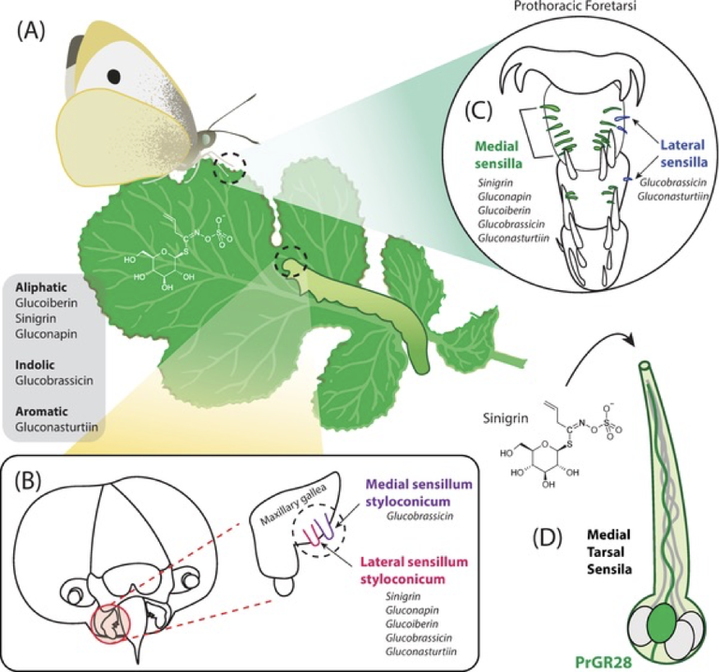Identification of a gustatory receptor tuned to sinigrin in the cabbage butterfly Pieris rapae

Abstract
Glucosinolates are token stimuli in host selection of many crucifer specialist insects, but the underlying molecular basis for host selection in these insects remains enigmatic. Using a combination of behavioral, electrophysiological, and molecular methods, we investigate glucosinolate receptors in the cabbage butterfly Pieris rapae. Sinigrin, as a potent feeding stimulant, elicited activity in larval maxillary lateral sensilla styloconica, as well as in adult medial tarsal sensilla. Two P. rapae gustatory receptor genes PrapGr28 and PrapGr15 were identified with high expression in female tarsi, and the subsequent functional analyses showed that Xenopus oocytes only expressing PrapGr28 had specific responses to sinigrin; when ectopically expressed in Drosophila sugar sensing neurons, PrapGr28 conferred sinigrin sensitivity to these neurons. RNA interference experiments further showed that knockdown of PrapGr28 reduced the sensitivity of adult medial tarsal sensilla to sinigrin. Taken together, we conclude that PrapGr28 is a gustatory receptor tuned to sinigrin in P. rapae, which paves the way for revealing the molecular basis of the relationships between crucifer plants and their specialist insects.
Supplementary notes can be added here, including code, math, and images.